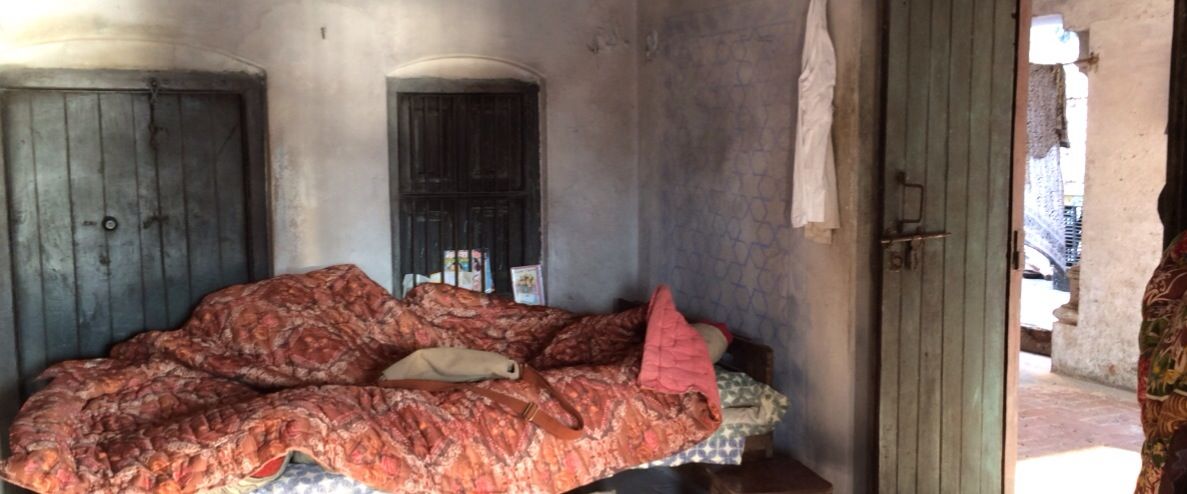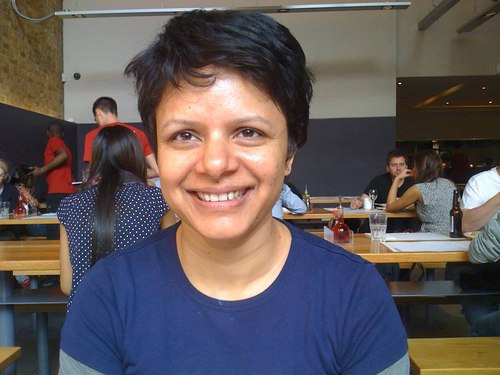Working with acclaimed art director Suzanne Caplan Merwanji (whose work in Farhan Akhtar’s film Dil Chahta Hai gave Hindi cinema, a new design template) in the capacity of a photographer, Meenal Agarwal never really thought she would get sucked into the world of creating multi-dimensional cinematic contexts. Contexts where stories can live, breathe and unfold for a limited period of time as they are being filmed but then are imprinted forever on celluloid memory. But soon enough Meenal fell heart first into production design.
Cinephiles will remember the cluttered apartment she created for Mixed Doubles (2006), husband Rajat Kapoor’s funny and slightly disturbing take on marital ennui. Her more recent work in Rajat’s Ankhon Dekhi and Yashraj’s clutter-breaking production Dum Lagake Haisha, has offered wonderful insights into lives that don’t smell of varnish.
In these films, using steel trunks, peeling walls, faded bed covers, mismatched cushions, masala jars beaten into discoloured shapelessness by time and a million little touches, Meenal sensitised the mainstream audience to the importance of production design that does not seem designed.
In Dum Lagake Haisha, she recreated the nineties with a recording shop and a home that took millions of viewers back to their youth in small towns and in rooms where not a jot of design consciousness could survive the jumble of middle-class existence, where collections of cassettes gathered dust in built-in shelves.
Meenal when asked to describe how she got it so right, says, “I always react instinctively to a story. To be able to visualise a time that is gone comes naturally to someone like me who was born in the 70s. The 80s and the 90s in a way were rich with cognitive references as well. A lot of memories that existed somewhere in my sub-conscious mind surfaced during the recce I did for the film. The research I do is always around how and where people live. How they keep their homes… the clutter that exists in nooks and corners. Money plant in a bottle. A grandfather’s clock. And what I can only describe as rubbish. Rubbish that lies on tables, on shelves. Bits and bobs that haven’t been moved for years. They tell you more about a person than things that are dusted and in order. Of course, a lot of nostalgia and emotions attached to the 90s went into the design as well.”
Designers, she says, are like Peeping Toms. “Every time I visit a home, I’m looking for stories or things that tell a story,” she says. And adds, “When I am asked for references or how I am going to design a space, I cannot describe the process because it all comes together at a strange level. It begins with me identifying with the story, the character and then I create an environment that the actor can identify with, that he or she can use in the performance because performers need things to work with.”
Working for Ankhon Dekhi was like working not with props but life. So the cramped, damp house streaked with occasional sunlight was for all practical purposes, real. So were the masalas in the jars and the clothing left out to dry.
And working with Rajat, her husband, is always ‘nice’ because, “There is absolute and implicit trust between us. Whenever he writes something, I read it and give my feedback as an objective reader. Not just me, his entire team rallies around him and has been with him for years. I work with all of them and it becomes a totally collaborative journey for all of us.”
Meenal hopes to some day work for a film like Terrence Malick’s Tree of Life and also admires Mukund Gupta’s work for Habib Faisal’s films and Vandana Kataria’s work for Dibakar Banerjee’s films.
She says, “Designing for a film is like working with a blank canvas. And giving a dimension and perspective to a story. I have fun with the process. I enjoy texturing stuff, creating a milieu for a character, be it for cinema or ads but I really want to do a glossy film now.”
But knowing her, even gloss in her will not just be skin deep.
 with The New Indian Express Reema Moudgil works for The New Indian Express, Bangalore, is the author of Perfect Eight, the editor of Chicken Soup for the Soul-Indian Women, an artist, a former RJ and a mother. She dreams of a cottage of her own that opens to a garden and where she can write more books, paint, listen to music and just be silent with her cats
with The New Indian Express Reema Moudgil works for The New Indian Express, Bangalore, is the author of Perfect Eight, the editor of Chicken Soup for the Soul-Indian Women, an artist, a former RJ and a mother. She dreams of a cottage of her own that opens to a garden and where she can write more books, paint, listen to music and just be silent with her cats










